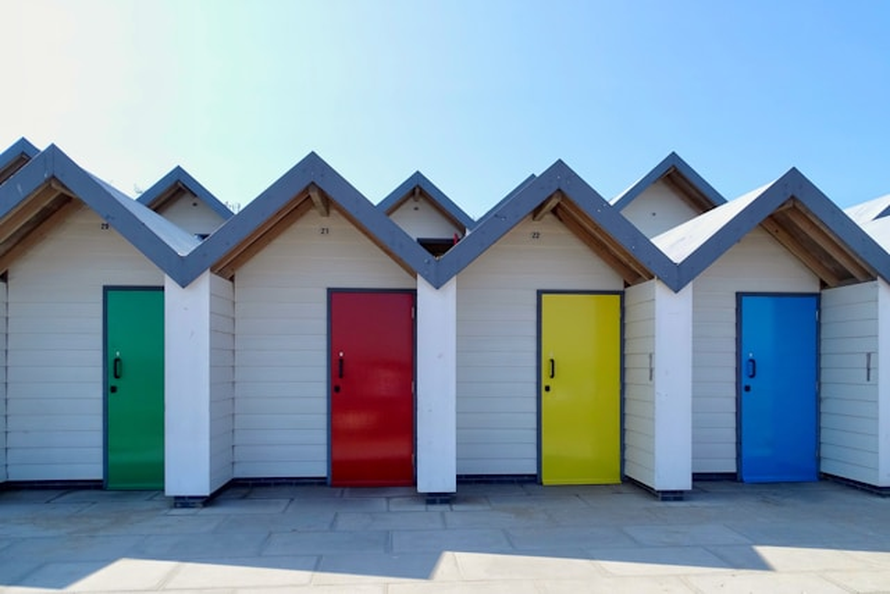The 2024 English local elections: a regional look

Other political colours are available.
On 2 May, 10,248 candidates are standing for 2,707 council seats across England. Using Democracy Club’s candidate data, it is easy to analyse the candidates by regions or council area - which is what we’ve done!
Where are elections happening?
Scheduled elections are taking place in 107 council areas. Eight of England’s nine ‘NUTS1’ regions have at least one scheduled council election, while London has only a handful of by-elections.
| Region | Council seats up for election | Candidates in region |
|---|---|---|
| East Midlands | 18 | 88 |
| East | 508 | 1,771 |
| London | 15 | 71 |
| North East | 165 | 592 |
| North West | 466 | 1,729 |
| South East | 594 | 2,271 |
| South West | 341 | 1,335 |
| West Midlands | 335 | 1,210 |
| Yorkshire and The Humber | 265 | 1,181 |
| Total | 2,707 | 10,248 |
The council area with the most seats up for grabs is Dorset, with 82; the council with the fewest seats are Broxbourne and Tamworth, with only ten each.
Who’s got the most (and least) choice?
Longest ballot paper. Voters in two wards have got 16 candidates to choose from: Hitchin Bearton (North Hertfordshire) and Barton & Tredworth (Gloucester) - each of these wards have three seats up for grabs.
Highest candidate/seat ratio. In terms of diversity, six single-seat wards have eight candidates each: two wards in Oldham, and one each in Coventry, Leeds, Plymouth and Wigan.
Most candidates in a council area. The council area with the most candidates is Bristol, where 304 candidates are fighting for 70 seats. However the council area with the most choice is Plymouth, where the city’s 19 seats are being contested by 119 candidates (including very strong showings by the Trade Unionist and Socialist Coalition and Reform UK).
Least competitive council areas. Voters in 77 wards have only two options on the ballot paper. Ten of these wards are in Knowsley, where the Green party or Independents are the only competitors to Labour for these seats.
The council area with the fewest candidates per seat is Epping Forest, where 122 candidates are fighting for 54 seats (only slightly more than two candidates per seat). There are so few candidates in five of Epping Forests’ wards that one party is guaranteed at least one seat in each, for lack of opposition: in both Waltham Abbey South & Rural and Waltham Abbey West, three Conservatives are facing only one Labour candidate for the three seats, guaranteeing the former two seats each. This situation is mirrored in Warrington, where Labour are guaranteed a number of seats in the same manner.
Where are the parties standing?
The ‘big four’ parties
In comparison to the smaller parties, the percentage of seats being contested by major parties remains relatively stable, although the Green party has substantially improved its position in relation to the other three.
The smaller parties
To take a closer look at the smaller parties contesting seats this week, we have compared this year’s data with the past three local English council elections: 2021, 2022 and 2023. It is important to note that the number of seats up for election changes each year, with the coverage being relative to the total number of seats up for election per year.
Smaller parties including Reform UK, Yorkshire Party, Workers Party for Britain and Heritage Party have increased their seat coverage percentage by double (or more) since 2021.
With the highest increase, Reform UK’s seat coverage has risen from 5.7% in 2021 to 12.2% this year. The Trade Unionist and Socialist Coalition party has the second highest seat coverage increase, from 5.3% coverage in 2021 to 10.1% in May 2024.
Where are the smaller parties standing?
Each of the smaller parties have fielded a high proportion of candidates in specific council elections (which is to be expected, with many smaller parties being regionally focussed):
-
Reform UK are contesting all seats in the following council elections: Hartlepool (12 seats), Sunderland (25 seats), and Reform UK and Bolton For Change are contesting all seats in Bolton (21 seats).
With a total of 329 candidates fielded, the party is standing most of their candidates in Northern England, with 41%, 20.1% in the Midlands (to be noted that the number of elections taking place in this region is lower) and 38.9% in Southern England. -
The Trade Unionist and Socialist Coalition are fielding a total of 273 candidates across England, most of these candidates are standing in Northern England, with 52%, followed by the South with 32.2%, and 15.8% in the Midlands. Of this, the party has the most candidates standing in Sheffield: 27 candidates, and Plymouth: 19 candidates.
-
Fielding a total of 38 candidates, the Yorkshire Party is focused on Bradford and Leeds, with 12 candidates in both areas.
-
The Workers Party of Britain are centred on Rochdale with 13 candidates, and six candidates standing for election in Manchester. The party has fielded a total of 33 candidates across England.
-
With a total of 33 candidates fielded across England, the Heritage Party are strongest in Southend-on-sea, with seven, and four candidates in Sheffield.
Independents
Independent candidates are much more common in Northern England than in the South. The three regions of Northern England contain 33% of the seats up for election, but 47% of independent candidates are standing here.
Find out more
If you are interested in finding out more about candidates, full candidate CSV datafiles can be downloaded from our Candidates database. We’ve also got a new CSV builder, if you want the additional fields (including NUTS regions).
If you publish anything using it, please cite Democracy Club and provide a link to democracyclub.org.uk. You can also find out more about the candidates in your local area by visiting WhoCanIVoteFor.co.uk.